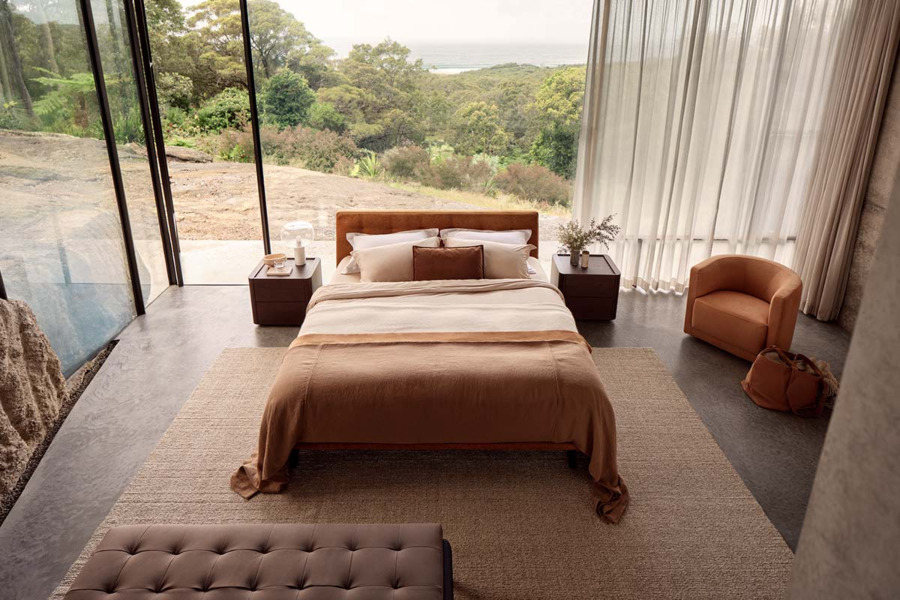We use cookies to make your experience better. To comply with the new e-Privacy directive, we need to ask for your consent to set the cookies. Learn more.
Select Shipping Country & Currency
What Is Feng Shui and How Does It Work?

What Is Feng Shui?
Feng shui is an ancient Chinese art that involves strategically arranging spaces to allow for proper energy flow that aligns with natural forces. Translated literally, the words feng and shui mean wind and water. More commonly, the practice is referred to as the way of wind and water. It’s based on the idea that all objects harness energy. Therefore, the way you arrange furniture and other elements in your living space can impact how you feel in your home.
Feng shui practitioners believe that balancing opposing but complementary energies increases the flow of good energy to generate good health, improved relationships, luck, and prosperity. The practice dictates where objects should be placed in relation to windows and doors and the use of the five natural elements in decorating.
History and Origins
While the exact beginnings of feng shui aren’t recorded, it’s widely accepted that the practice emerged during the Zhou dynasty, more than 4,000 years ago, and is rooted in Taoist beliefs surrounding the flow of the life force (chi). Some of the earliest uses of feng shui determined grave placement in China. Practitioners believed that the right location could bring blessings for future generations and that poor placement would bring misfortune.
Feng shui was used to determine the ideal location of buildings and outdoor features such as gardens. The location of the land and surrounding elements dictated the direction that structures and windows faced. The layout of The Forbidden City, built during the Ming dynasty, follows feng shui principles. Its north-south alignment is meant to achieve a superior position and increase positive energy flow.
The use of feng shui predates most of the design styles used in Western countries, and elements of the practice are used in many of the most popular interior design trends today.
Basic Principles
Feng shui is based on the Taoist belief that everything (including inanimate objects) contains chi, or the life force made up of yin and yang elements. To encourage optimal chi flow and negative energy blocking, several basic principles and concepts are often combined. The basic principles of feng shui used in interior decoration include bagua maps, chi energy, the five elements, and yin and yang.
Bagua Maps
A bagua map is an octagonal energy map featuring eight areas around a center. The maps are placed over the floor plan of a home or each room, with the bottom of the map aligned along the same axis as the front door. Bagua maps are divided into eight areas corresponding to life experiences, such as prosperity, relationships, knowledge, and fame. These sections are also assigned specific colors and elements that align with each attribute.
Chi Energy
Taoism is based on living in harmony with the universe by balancing the forces of yin and yang that make up chi, or the energy of life. By balancing elements that contain yin and yang energy, Taoists believe that people can improve the flow of positive chi and block negative chi. The practice of feng shui improves the flow of chi through a specific arrangement of furniture, decorations, and even buildings.
The Five Elements
The five natural elements (wood, fire, earth, metal, and water) are said to affect how you feel in a space. The elements are represented by materials in decor and the use of colors in specific areas.
Yin and Yang
The philosophy of yin and yang is founded on the belief that everything is composed of contradictory energies that can’t be separated. Examples of yang energy include masculine energy, light, fire, sun, and south. Yin energy represents feminine energy, dark, water, moon, and north. Feng shui is used to balance yin and yang to improve the flow of chi.
How Feng Shui Analyzes Spaces
Feng shui can be used to influence architectural layouts and interior design in homes, workplaces, and public spaces. The practice can be used in construction to determine the best location and position for a building. It can also dictate the placement of doors, windows, and rooms.
Many people prefer to incorporate feng shui into interior home design. It’s used to decide furniture placements, wall colors, decor materials, furniture shapes, and other items. For example, placing furniture in commanding positions and locations that won’t disrupt energy flow improves feelings of safety and well-being. Decor choices such as color or decorative items can change the energy in a room.
Tips for Using Feng Shui at Home
Some people work with a feng shui expert to design their home, but you can use what you’ve learned about the practice to make changes on your own. Here are some easy feng shui tips you can apply to various rooms within your home.
Declutter to Improve Energy Flow
A home waste audit can help you eliminate objects that block positive energy and reduce the amount of waste you routinely produce. By removing items that don’t contribute to the purpose of a room, you can open spaces and make better use of valuable space.
Optimize Work Places for Success
Various colors and materials correspond with specific objectives. For example, purple corresponds with wealth, and wood elements are associated with vitality and upward movement. By combining these principles with ideal furniture placement, you can decorate your home office to improve focus and build success.
Place Major Furniture Pieces in a Commanding Position
Ideal furniture placement can enhance feelings of confidence and safety within each room. According to feng shui experts, furniture is in a commanding position when it’s facing a door or entryway and places your back against a solid wall. This allows you to see who is entering the room and know what is behind you.
Put Decor to Work
Home decor that is both beautiful and functional can do double duty in any room. For example, mirrors can be placed to improve visibility and reflect energy, while plants nourish energy and support sustainable decoration efforts.
Suggested Benefits
There is no scientific evidence to directly support the effects of feng shui, but those who use it experience varied benefits, such as improved feelings of security and increased energy flow. Reducing unnecessary clutter and optimizing furniture placement can naturally improve energy and create harmony throughout your home.
Feng shui is said to offer these varied benefits:
- Better relationships from balancing contradicting energies to create a harmonious environment.
- Higher quality sleep from applying feng shui to your bedroom
- Improved mental and physical health due to stress reduction
- Improved well-being from having a home designed for comfort and relaxation
- Increased wealth from optimizing your workplace to improve focus
Our Recommendation
While feng shui isn’t a magic wand to erase life’s stressors, it can enhance the flow of energy and increase positive feelings in your home. Explore your home to determine where energy flow is constricted and how you can make impactful changes. Consider beginning with small changes, such as introducing natural elements to a room or rearranging furniture. As you become more comfortable with the process, implement additional updates, such as color changes and a complete home waste audit, that will have a larger impact.
